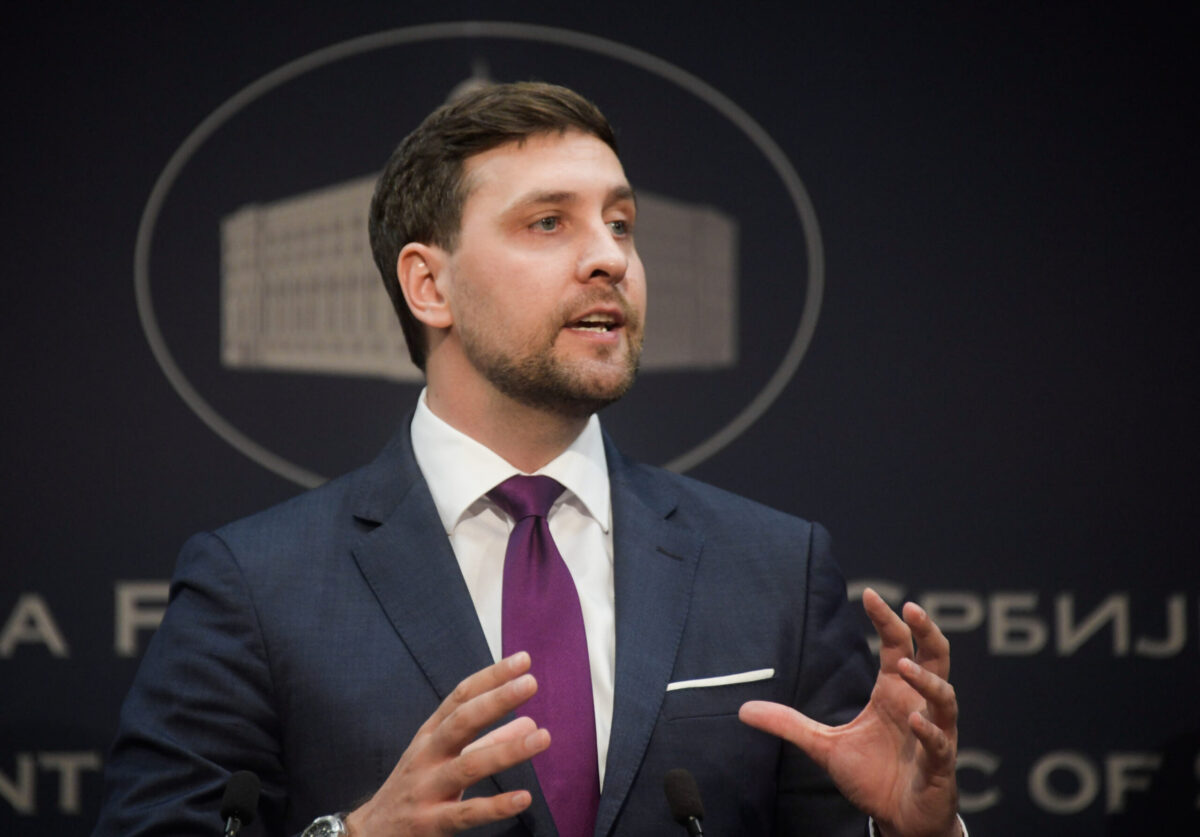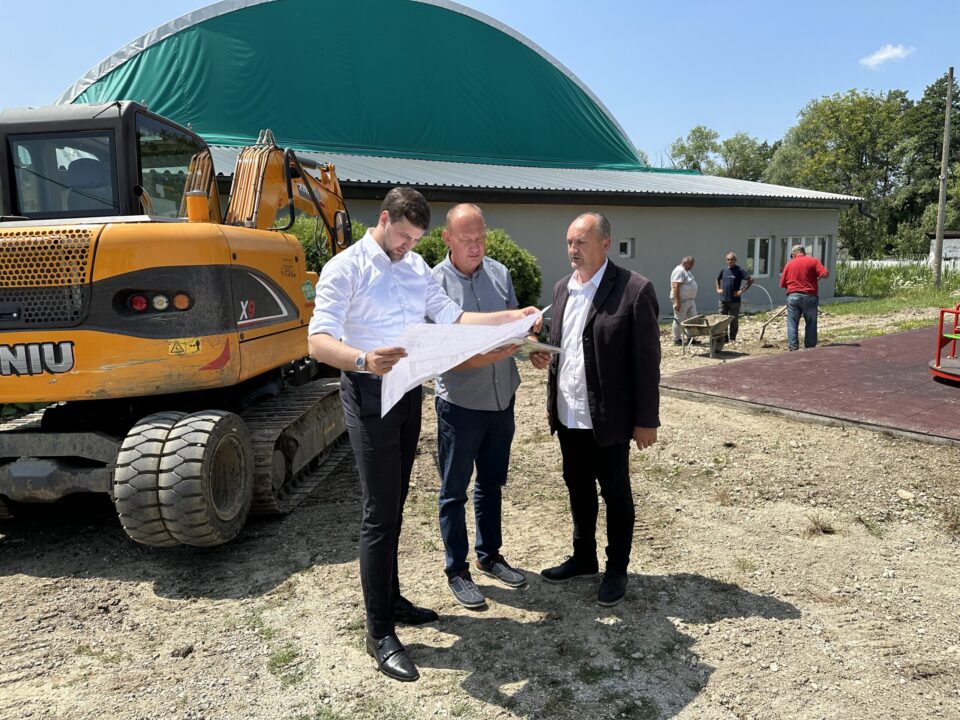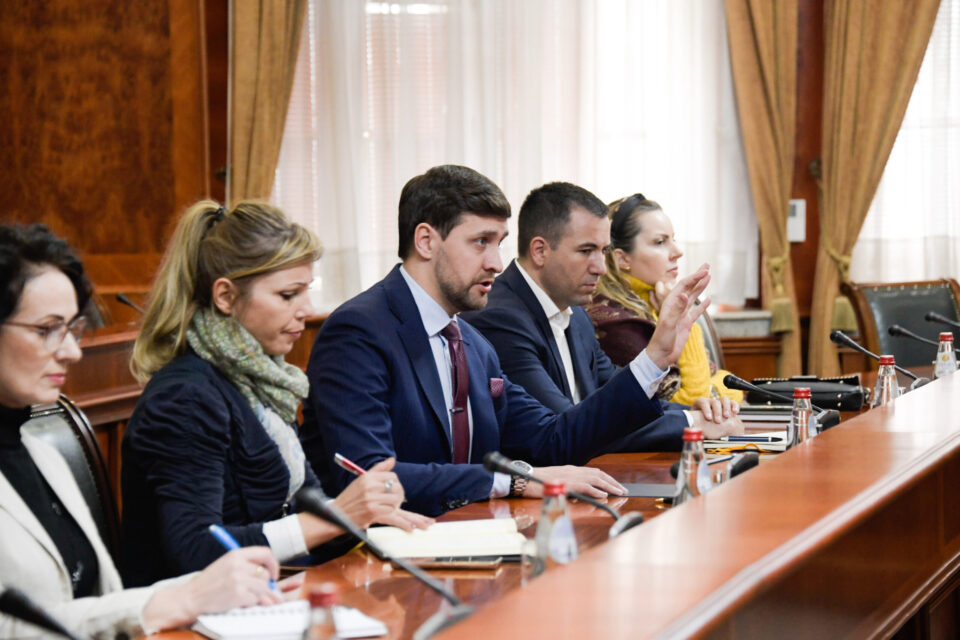Equality is not uniformity but learning, understanding, and accepting diversity

Serbia is undergoing a great transformation, with a noticeable reduction in regional differences. The Minister of Balanced Regional Development, Edin Djerlek, talked to us about how the differences between Belgrade and the rest of the country are decreasing and how many villages and small communities are once again becoming desirable places to live.
How much has Serbia done regarding balanced regional development since you became the line minister?
The Cabinet’s key activities, which I have been at the helm of for less than a year, go in three directions – systemic and institutional improvement of regional development policy, boosting the medium institutional level of regional development through the affirmation of regional strategic planning, increasing the capacity and role of accredited regional development agencies, greater degree of vertical coordination and networking at all three levels (central, regional and local) and encouraging regional growth through co-financing of important regional and local projects in various areas.
Strong coordination of regional development subjects was established at the vertical and horizontal level for the first time in Serbia. We have increased the capacities of regional development agencies and local governments through more than 90 development projects.
Within the framework of the systemic and institutional improvement of regional development policy, I am particularly proud of a study we drafted called “New Measurement Model for the Level of Development in Municipalities and Cities in the Republic of Serbia.” As a result of the study, we now have a new methodology for measuring the level of development and, based on it, a new uniform list showing the level of development of cities and municipalities, given that the previous one was outdated and did not reflect the real situation. Now, you can get a precise regional picture of the situation in the municipalities and identify priority investment areas.
Small and large places sometimes seem like different worlds; in one, time flows more slowly, while in the other, quickly
From the perspective of someone originally from Novi Pazar, how do you see the relationship between the Serbian province and its capital? How have the village/town, capital/province differences been reduced?
I’ve been working hard on that for the past year. The methodology, study, and uniform list of cities and municipalities’ development levels is not something we will secretly keep to ourselves. Still, we are willing to leave our knowledge to the government so that it can continue on the same path. It doesn’t matter whether I or someone else will do that job; it’s important to me that the people in Serbia feel the difference, and I’m happy that I contributed to that. To reduce the differences, we need to monitor the situation on the ground closely and have an institution like the Ministry for Balanced Regional Development, which then makes targeted investments and gaps in the differences between and within the regions. As I said, we have already made a significant step forward compared to the previous situation. We did a lot, and yet much work remains to be done. It is very important to approach this with dedication and responsibility/, and I believe that my and the Ministry’s team’s approach was very good and a source of pride for both us and the people in Serbia.
I was born in Belgrade but grew up in Belgrade and Novi Pazar. Considering that my father is from Novi Pazar, I spent a large part of my childhood in Novi Pazar. It may be strange to some people that, as a child born in Belgrade, I couldn’t wait to spend as much time as possible in a smaller city. I am inextricably linked to Novi Pazar, so I always have two homes and my own two cities. Small and large places sometimes seem like different worlds; in one, time flows more slowly, while in the other, quickly. The capital offers variety, and it is a beehive of activity, but Novi Pazar, as well as places similar to it, gives a feeling of tranquillity, intimacy, and belonging. We must not ignore them, as they have their enormous potential. People from smaller towns who prosper in Belgrade and other larger cities demonstrate this.
In terms of living in rural areas, it is obvious that living there will never be the same as living in a city, but that is not the goal. The goal is to live dignified, beautiful, decent lives in the villages because they feed the country.

To what extent has globalization contributed to erasing civilizational differences between the countryside and the city, capital cities and provinces, powerful superpowers, and third-world countries?
Globalization has brought many good things but also many challenges. It has helped us to turn the world into a global village, communicate from one end of the world to the other, and have an insight into other cultures – news travels fast, and globalization is a kind of new wave of people’s enlightenment. We must be grateful for that but also aware of the problems it brings. It is important to use insight into different cultures to become more tolerant and reasonable, but we must not allow ourselves to merge and lose cultural authenticity completely. The world is beautiful because of its colourfulness, not because of uniformity. Equality is not uniformity but learning, understanding, and accepting diversity.
It is important to take advantage of the global market and remember that now, more than ever, every earthquake in any country affects all others and, therefore, us too. Consequently, we must always know how to position ourselves and minimize possible damage.
Smaller places must and can keep up with the world
Technological progress has brought us information, with knowledge being available at the click of a button. This is something that must be used for even regional development. With this in mind, we influenced the digitalization and modernization of our municipalities to improve the quality of services we provide to our citizens. Smaller places must and can keep up with the world. These seem like small steps, but they still take us forward and make a noticeable difference.
We can see that residents of big cities, especially Belgrade, are increasingly becoming aware of the advantages of living in smaller areas. Why does that happen?
I believe many things led to this. During the coronavirus pandemic, many residents of big cities, especially metropolises like Belgrade, saw how it doesn’t take much to feel trapped in your big town. It suddenly became unimportant that you lived in a city with millions of inhabitants, and you could see how privileged people from smaller towns are. The community spirit in small communities is sometimes stronger and more sensitive than in busy, spacious environments. Moving from the city to a village (or a smaller place) during the pandemic became a global trend.
On the other hand, we have to come to a full circle at some point, and I am looking forward to that greatly. People moved en masse to big cities in search of a more comfortable life, and now many, especially young people, are turning to small towns for a more peaceful life. This is wonderful news for Serbia because few things are as sad as empty schools and kindergartens.
I believe that the entire government’s work also contributed to this. The Ministry for Balanced Regional Development has also done its share. We focused all of our work on smaller communities – we co-financed projects and supported everyone who wanted, together with us, to contribute to the betterment of their communities. To further improve the quality of life of our citizens, we invested in sewage and water supply grids wherever necessary, as well as in many roads that connect our villages with cities. Furthermore, we allocated resources to business and industrial zones to fully equip them and thus create the prerequisites for attracting investors and creating new jobs. We had significant allocations for reconstructing and rehabilitating many cultural centers, children’s playgrounds, schools, and sports infrastructure. All of this is of key importance for the growth and development of our regions, and this is precisely what attracts people to immigrate or return to these areas.

What are the underdeveloped areas of Serbia today? How did we end up where the once most developed and advanced regions became neglected and lost their population (Banat County, for example)?
There are several chronological determinants of regional disparities in Serbia. Regional inequalities are a systemic multi-decade problem, which became more pronounced during the transition process and further escalated from 2009 to 2014, after the 2008 global financial crisis. The causes of regional disparities are multiple-inherited inequalities, effects of privatization and transition, incomplete institutional infrastructure, lack of coordination of sectoral and development policy, etc. Furthermore, Serbia’s regional development policy is continuously influenced by the implementation of the reform agenda.
The first important thing is that we managed to stop the growing trend of regional disparities and that regional convergence has started.
The current regional development map of Serbia is a consequence of two factors: the dynamic growth rate of the economy (average annual growth rate of 3.2% from 2015 to2021) and the effects of the demographic transition, which is in its final phase and is reflected in the processes such as depopulation (population decline of 7.5%) and demographic aging of the population (the average age was 42.2 years in 2012 and 43.8 years 10 years later). Demographic transition is a characteristic of all countries in the region – Bulgaria, Serbia, Hungary, Croatia, and Romania.
Dynamic growth at the national level caused the repositioning of areas with a higher growth rate than the national average. Concrete results are fewer underdeveloped areas (from 44 municipalities in 2015 to 33 in 2022) and the dynamic growth of some areas that have managed to attract foreign investors. Today, compact undeveloped areas are located in the South of Serbia, in the Pčinja and Jablanica regions, and Sandžak. These two regions have municipalities that failed to attract investors due to undeveloped infrastructure capacities. The areas in Banat are not lagging in development. The regional picture of Banat is heterogeneous – the fastest growing are small municipalities in the area of the South Banat region (GDP per capita was EUR 3,500 in 2015 and EUR 6,500 in 2021), while slower growth was seen in municipalities in the North Banat region (from EUR 3,500 to EUR 4,700) and the Middle Banat region (from EUR 3,800 to EUR 4,900).
We managed to stop the growing trend of regional disparities
What are the Ministry’s plans and ongoing projects that facilitate balanced regional development?
A few days ago, we awarded 84 grants to young and female entrepreneurs in the value of 250,000 dinars each under the auspices of the Development of Youth and Female Entrepreneurship in the Pčinja and Jablanica Districts project. I aim to work on support programs for people with disabilities and marginalized groups. I am glad that we contributed to Serbia winning the organization of EXPO 2027, and all Serbian citizens will feel the magnitude of that success. We will continue to co-finance projects, listen to the needs of citizens, and help in every way to facilitate balanced regional development.
On the other hand, and in parallel, we need to continue improving the institutional framework of Serbia’s balanced regional development policies. In this context, several key tasks in the coming period must be done to achieve more regional growth and development. Firstly, we need to adopt the new Law on Regional Development, as the previous one was passed in 2009 and is outdated and dysfunctional in certain parts and hinders the improvement of regional development policy. Secondly, we must draft special regional development programs for areas with special problems. And thirdly, we need to continue facilitating regional strategic development planning by boosting the capacities of accredited regional development agencies.
Which areas in Serbia show great progress? Can you single out some regions that you foresee a bright future for?
As I said earlier, the dynamic growth rate based on attracting foreign, export-oriented investors and constructing important regional infrastructure contributed to significantly more dynamic growth in some areas. The Bor region (cumulative growth of GVA per capita from 2015 to 2021 was 157%), Danube region (67%), Srem region (50%), South Banat region (49%), and Rasina region (47%) all achieved great results.
The construction of large-scale infrastructure, which is ongoing, especially the Moravian Corridor, creates the prerequisites for the propulsive growth of a large number of regional areas in the central part of the Republic. Regarding compact, underdeveloped, and border areas, the state needs to draft special programmes with significant incentive instruments.
